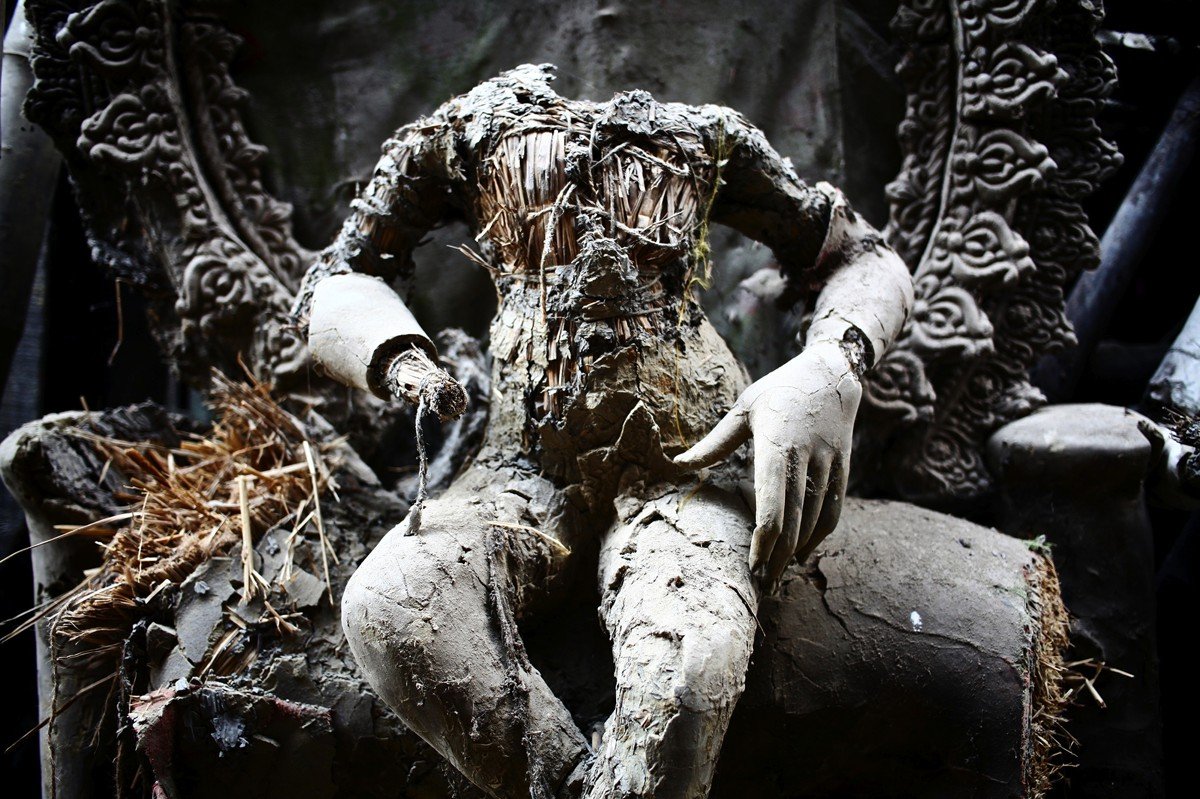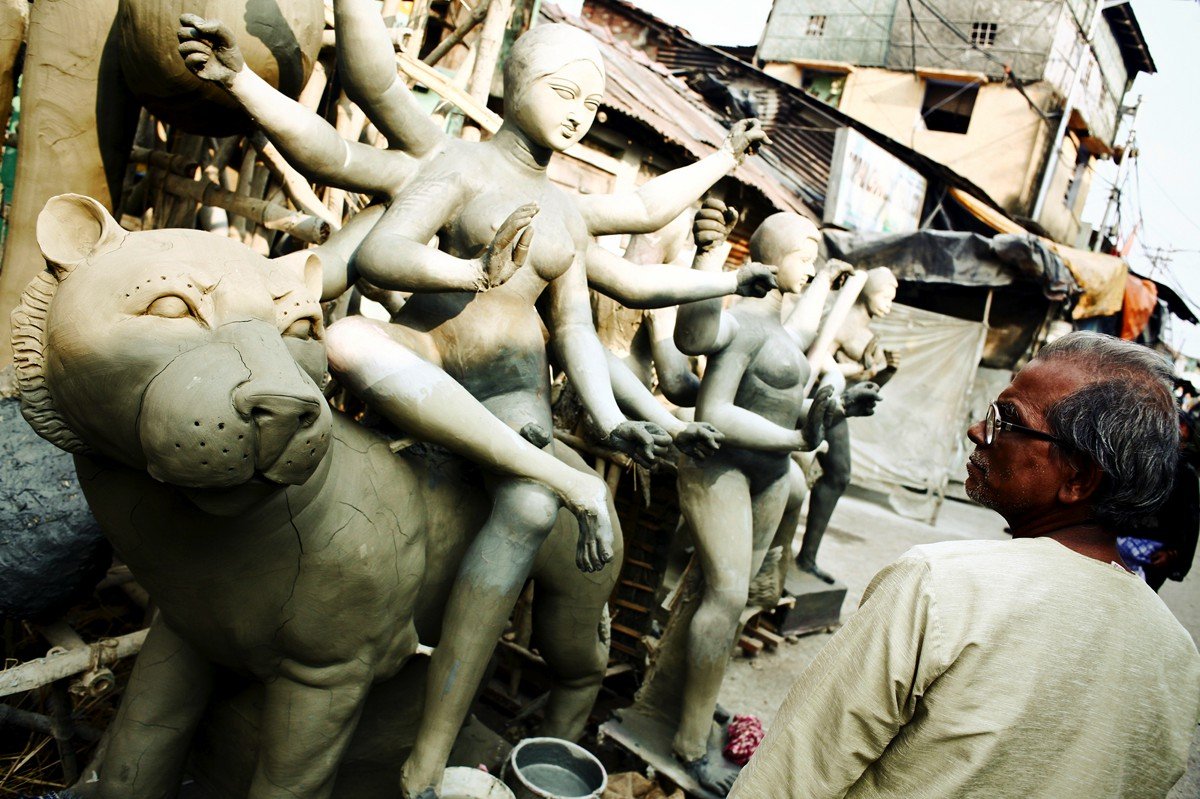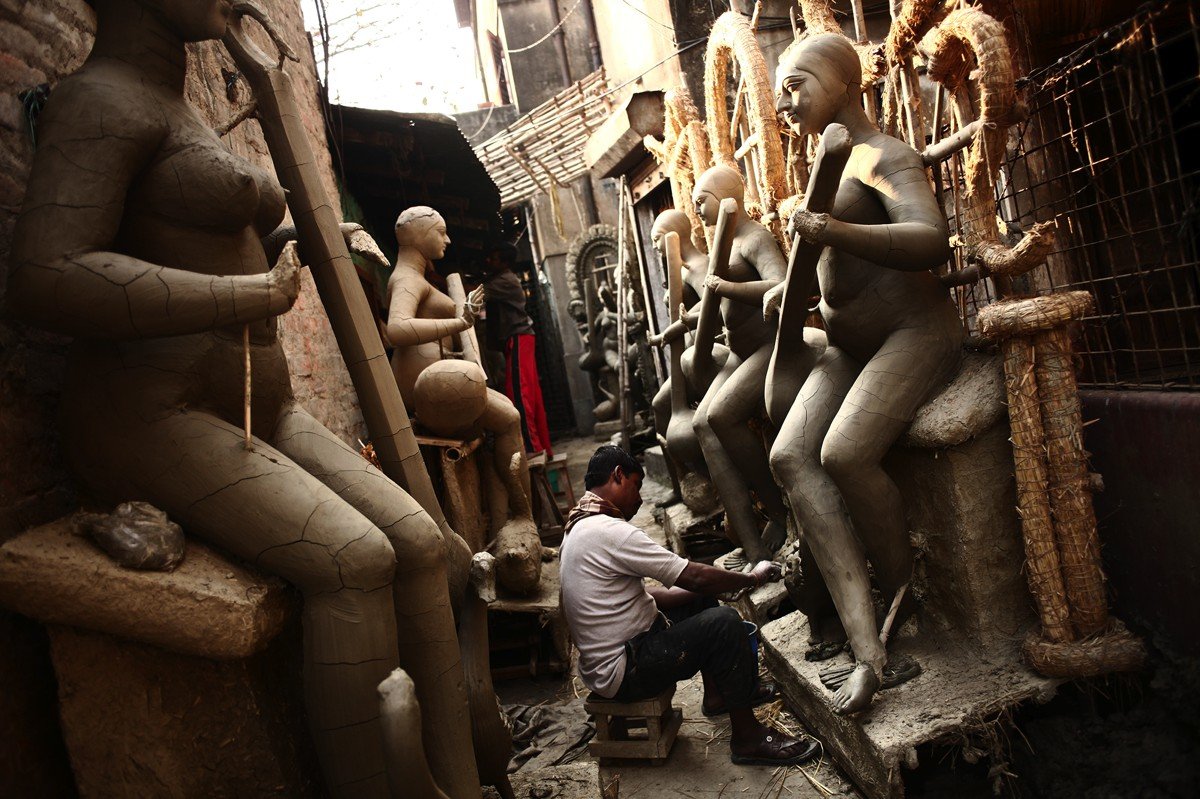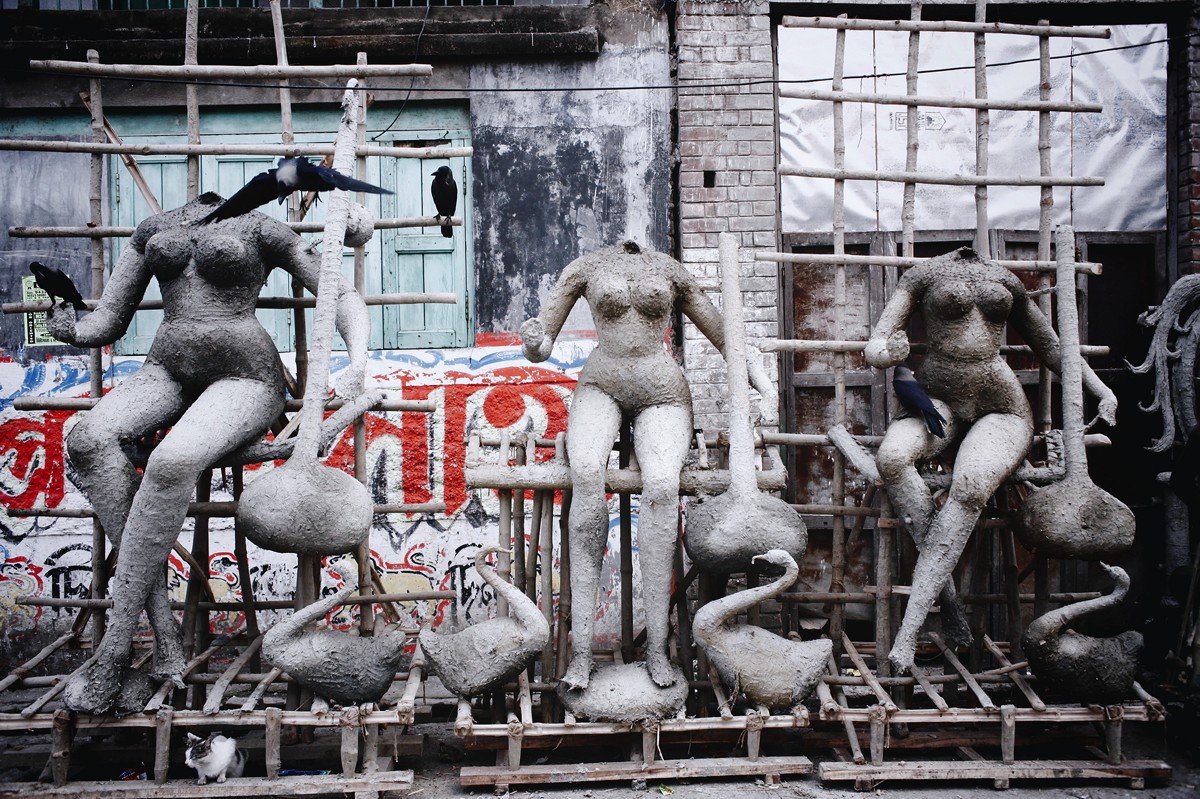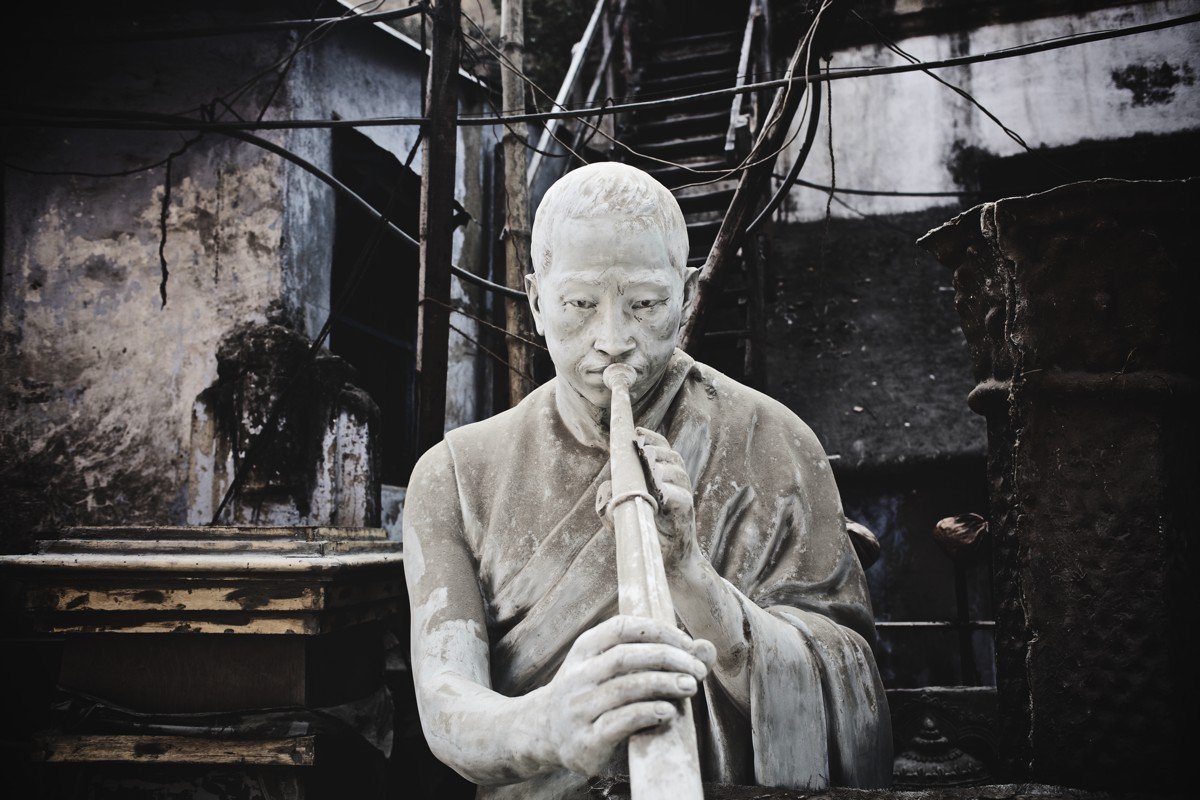
Kumartuli
Kumartuli is where Calcutta’s artisans bring the gods down to earth. In this crammed labyrinth of workshops, the traditional crafting of murti, or deity statues, has carried on for generations.
With humble origins of clay, wood and straw, the statues take strikingly human form. Artisans lay plaster over the rough armatures, eventually sculpting the figures to an alabaster finish. Then it’s the turn of painters to bring life into the eyes and give the murti their ethereal expressions.
Finished but not yet imbued with divine presence, the statues are stockpiled outside of the workshops to make room for the next round of incarnations. The ranks of newly minted deities throng Kumartuli’s alleyways. Shiva, Ganesh, Lakshmi, Hanuman, Parvati, and the whole host of the Hindu pantheon multiply ad infinitum, watching city life pass by with a thousand unmoving eyes.
Once purchased by a household or temple, a murti is consecrated by a priest to invoke the energy of the deity it portrays. The now-living god is adorned with silk and jewelry, often at great cost. On festival days, the murti get paraded through the streets, stopping traffic for hours on end, and finally wind up on the shoreline of the Ganga. After a last hurrah, they’re jettisoned into the waves — silk, jewelry and all.
The murti drift out to sea, or else wash up on the muddy banks like all too mortal corpses. The quick lifecycle of Calcutta’s god statues ensures that Kumartuli’s artisans never stop hustling.






